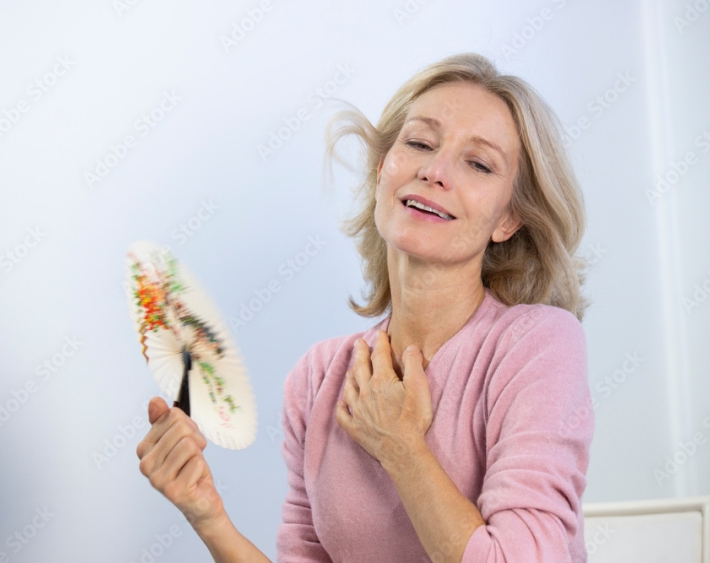hot flushes
A hot flush is a sudden, intense feeling of heat that often begins in your chest, neck, and face, then spreads throughout your body. Hot flushes are one of the most common symptoms of menopause, affecting more than 80% of menopausal women.
This natural process can create a sudden sensation of warmth, often accompanied by sweating, reddening of the skin, and a rapid heartbeat.
Let’s learn what causes them and explore practical ways you can stay on top of your hot flushes!


Are Hot Flushes and
Night Sweats the Same?
Hot flushes and night sweats are related vasomotor symptoms of menopause, both resulting from the body’s response to fluctuating hormone levels. A hot flush can occur during the day or night and may or may not be associated with sweating, whereas night sweats are periods of intense sweating that occur at night.
What Does a Hot Flush
Feel Like?
A hot flush feels like a sudden, intense wave of heat that starts in your chest and face and quickly spreads throughout your body. Hot flush symptoms can include reddening of your skin, sudden sweating, even if the room is cool, and you may start to feel a bit dizzy or anxious.




What Causes
Hot Flushes?
Hot flushes are primarily caused by your body adjusting to declining oestrogen levels during menopause, which can affect the hypothalamus, the part of your brain that regulates body temperature. When this happens, your hypothalamus might mistakenly sense that your body is overheating, triggering a hot flush to cool you down.
Depending on your lifestyle, foods like alcohol, spicy foods, and caffeine can trigger hot flushes. Alcohol and caffeine are both vasodilators, which may increase blood flow and trigger a hot flush. Spicy foods containing capsaicin can trigger heat receptors in your body which can also lead to vasodilation.